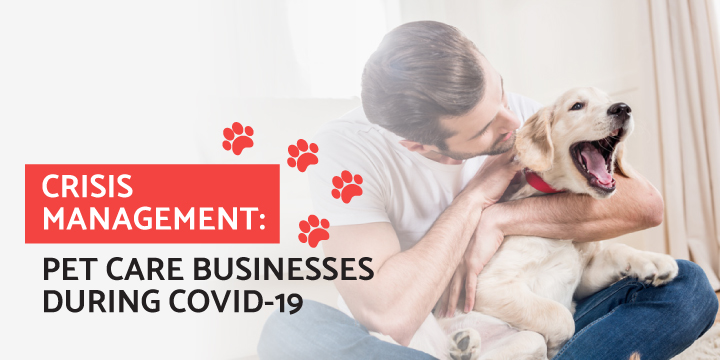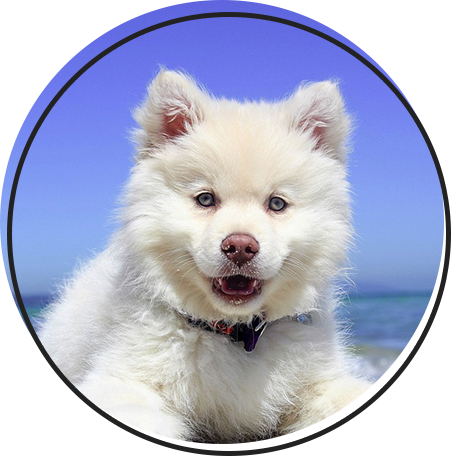
Crisis Management: Pet Care Businesses During COVID-19
With the COVID-19 pandemic sweeping the globe, businesses of all types and sizes are feeling the pressure.
There’s never a period when a crisis is easy to manage. That’s especially true with businesses that involve the care of living things— schools, daycare centers, retirement homes, and pet care businesses have all been particularly hard-hit from the COVID-19 backlash. How do you continue providing care when interacting with other humans isn’t advised?
The answer is very carefully. Just as schools pivot to online learning, nursing homes close their doors to outside visitors, and nonprofits head to virtual events— your pet care business will need to respond to COVID-19’s demands.
At Gingr, we equip pet care businesses with technology to manage daily operations. This includes crisis management, meaning we’ve put some thought into exactly how dog daycares and boarding facilities should handle a crisis such as the novel coronavirus. We believe there are ways to continue normal petcare, nurturing relationships with clients, and outlast the crisis.
This guide will explore the following strategies for managing your pet care business during COVID-19:
- Stay as educated as possible regarding the virus.
- Stay aware of local laws and regulations.
- Designate leaders and refresh your emergency policy.
- Ensure you have all needed survival items.
- Review your business plan.
- Alter day-to-day operations to reduce the risk of spread.
We’ll expand on this Gingr blog post about disaster planning for dog daycare. As the landscape changes every day, there’s little time to waste when it comes to preparing COVID-19.
Let’s get started.

Stay as educated as possible regarding the virus.
COVID-19 is particularly fear-inducing because we simply don’t know very much about it yet. If you and your staff members have felt the stress, you can be sure your clients have as well.
The best way to combat fear is knowledge, so it’s up to you to stay as educated as possible regarding the virus.
For a pet care business, there are two populations to read about when it comes to the virus itself— humans and pets. Viruses affect different populations in different ways, and that holds true for the novel coronavirus.
We now know that both humans and animals are subject to COVID-19. However, while there’s been clear evidence of human-to-human transmission, there’s no evidence of animal-to-human transmission upon writing this piece.
Your best bet is to review the regular news— whichever outlets you may prefer— as well as reputable sources in animal care. For example, the American Veterinary Medical Association (AVMA) and Pet Sitters International (PSI) are both sharing information on how the virus can affect pets and their human counterparts.

Stay aware of local laws and regulations.
The current pandemic is challenging in that it requires intensive social distancing measures to be put into place. Across the county, we’ve seen city and county governments put their own versions in place— with some areas affected by both at varying degrees.
These “Shelter in Place” orders change frequently, whether becoming more strict or extending the time period. We’ve seen these orders limit the operations of businesses, restricting the actions of businesses labeled nonessential to whatever operations are possible with the least number of people present.
Pay close attention to the ordinances of your city and county, perhaps even enabling notifications from your local papers to ensure you’re kept up-to-date. The level of restriction on your business could change, quite literally, tomorrow. When it does, you want to be prepared to operate as a nonessential business— which could mean restricting clients that enter your premises, sending all pets home, or even refusing any new reservations until the order is lifted.
In addition to paying attention, you’re going to need an emergency plan for when the time strikes. Again, since these factors are changing daily, it’s best practice to be ready to-go before they do.

Designate leaders and refresh your emergency policy.
When you’re disaster planning for a dog daycare, begin by designating emergency leaders. This is the team member responsible for monitoring updates and communicating them across your staff. For example, this person should ardently watch local news just in case your town’s movement restrictions are changed.
We recommend taking this a step further and dedicating one or two (more if needed) staff members that will contact clients in the event of an emergency. This is especially important if you’re a dog boarding service, as movement restrictions could change at any point. If that happens while animals are in your care, they could be sticking around for longer than originally anticipated.
When that happens, it’s essential that clients are contacted regarding how you plan to care for their pets in the meantime. Are you going to continue boarding the animals until the restriction is lifted? Or, are you going to send as many animals home as possible, then continue caring for the remainder? Are you going to make any changes to your cancellation policy?
Solidify your plan for each and every “what if” and have it written on paper. Then, if the need arises, your dedicated leaders will communicate the plan with clients. We know that customer service is key (learning from customer service expert, Disneyland) to build strong relationships with clients. Once the crisis passes, you’ll be thankful for these strong relationships to carry you into the next period!

Ensure you have all needed survival items.
This is especially important in light of the aforementioned travel restrictions preventing clients from returning home when originally planned. If you’re a boarding facility, you probably have animals in your care while their families travel on vacations. Considering COVID-19 hit the U.S. right around when many students were let out for spring break— there’s a decent chance that you have a few longer-term guests in your care.
Ensure you have enough of the following supplies to last a few weeks at the minimum:
- Pet food and clean water.
- Basic pet first aid essentials (learn more through this guide).
- Cleaning supplies, including facilities sanitation and personal hygiene.
Further, locate leashes, transport carriers, medical records of animals in your care, and owner contact information in advance. This will come in handy if you have to evacuate for any reason, such as if a shelter in place order prevents normal operations at your facility.
If your organization is in a good place resources-wise, consider looking to local pet care nonprofits. These facilities likely have quite a few animals in their care and may be unable to easily adopt out pets during times of restriction. You could do something simple, such as sharing their donation request information with your social network followers, or something more large scale like coordinating a virtual crowdfunding campaign on their behalf.
Local communities should band together in times of crisis. Plus, we know that getting involved in your community is a great marketing idea for pet care businesses— so there’s really no downside here.

Review your business plan.
When you first started your dog daycare business, you probably outlined a business plan that included a few essential considerations. How you planned to price services and make a profit, which pet business insurance coverage you were going to invest in, and even which software solutions you would employ to make day-to-day operations run smoothly.
We recommend reviewing that plan in light of COVID-19, as the external factors influencing it will be drastically different. With fewer people leaving their homes and essential social distancing measures in place, fewer people will be inside your facilities at any given moment and there’s a decent chance that you’ll see a decrease in revenue in the near future.
Review your profit figures to understand just how much business you can stand to lose and still stay afloat after the crisis. If it’s likely to have a huge impact, you might qualify for emergency loans and funding from government resources, such as the Coronavirus Aid, Relief, and Economic Security (CARES) Act. If that’s you, it’s recommended that you contact your local Small Business Administration office.
As far as insurance is concerned, review your policy specifically where it may relate to the loss of business. Did you invest in any coverage that might provide financial protection in the event of fewer reservations?
For more information, check out this Gingr guide to building a dog daycare business plan. Use the guide to review your own plan. Are there any areas you need to revisit in the event that your business is affected by COVID-19?

Alter day-to-day operations to reduce the risk of spread.
However you plan to continue operations during this time, it’s important to do whatever you can to reduce the risk of spreading COVID-19. This includes:
- Increasing sanitation efforts. Any areas of your facilities that have high human traffic, including break rooms, restrooms, and even door handles, should be cleaned on a higher frequency than normal. Remember that this protects your staff, clients, and pets in your care.
- Decreasing human contact. This means avoiding having human clients entering your facilities, so try to do curbside pick-up if possible. Further, this means decreasing the contact of your employees with one another— ideally, you’ll want employees to remain six feet away from one another at all times. The best way to do this is to limit those working in your facilities to essential workers only.
If you’re working with a pet care business software, you can lean on that resource to facilitate your social distancing needs.
For example, you can use intuitive scheduling to ensure that there are never so many employees in your facilities that they’re unable to distance properly. This can be easily communicated digitally, so ideally your staff members don’t have to interact physically with one another at all.
Concerning clients, curbside pick-up can be facilitated through dog daycare software as well. When a client is coming to drop off or pick-up their pet, have them text you when they pull up. Then, you can go out and manage the transition at their vehicle while maintaining distancing. Further, use credit cards already on file to speed up the transaction and eliminate the need to touch customer’s credit cards.
After the pet is brought out to the vehicle, you can send a follow-up report card communicating any essential information about that pet’s stay in your care. This is a great way to continue building relationships between your business and clients, as we know that follow-up messaging is a powerful tool.
Small businesses everywhere are feeling the effects of the COVID-19 pandemic, and that holds true for pet care businesses as well.
By staying informed, refreshing your crisis policies and supply reserves, and communicating with clients, your pet care business will be able to weather the storm. Use this guide to review your policies and you’ll be off to a great start.


























